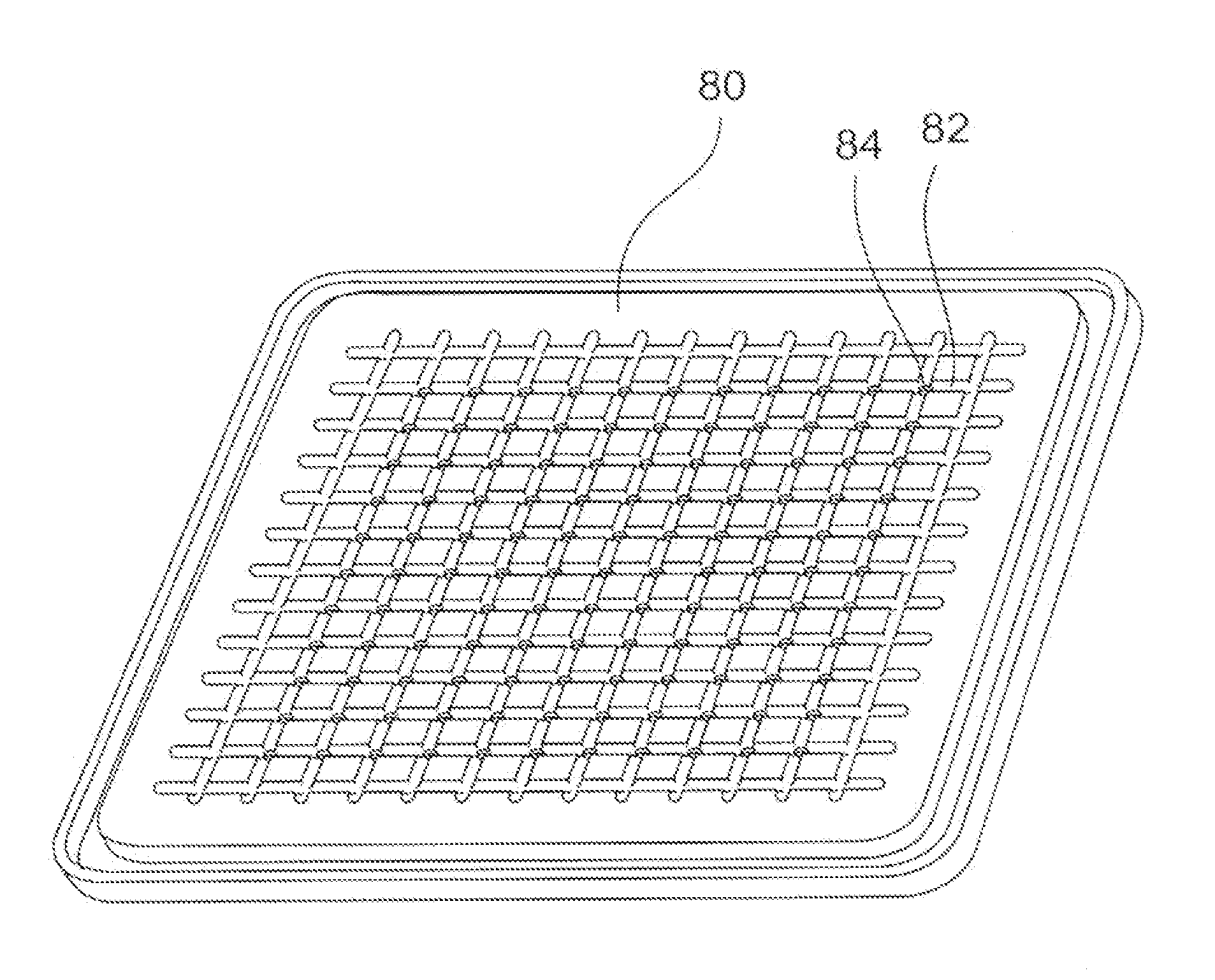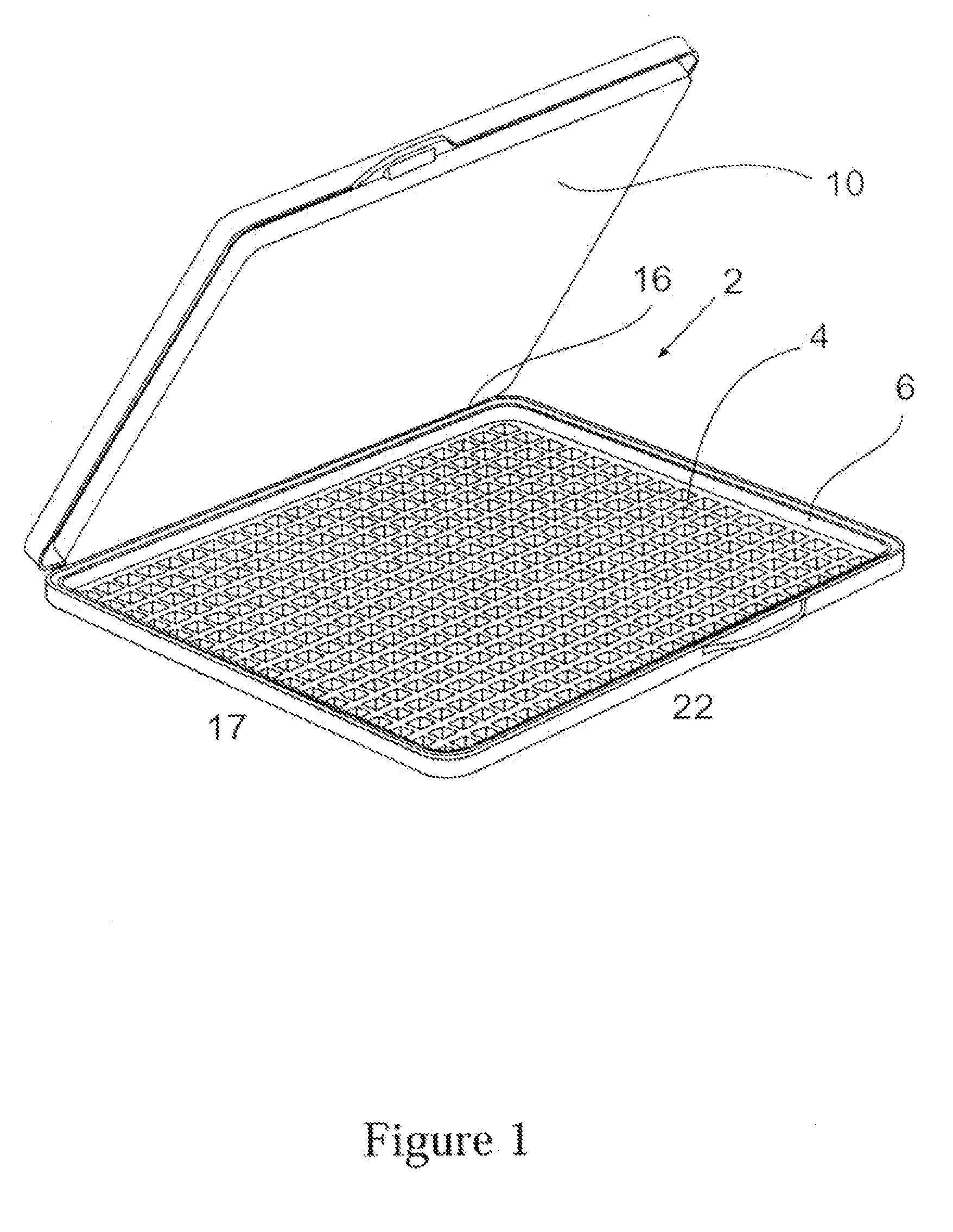Immunoassay product and process
a technology of immunoassay and product, applied in the field of immunoassay product and process, can solve the problems of large scope of biological effort, long process, high noise and low detection level
- Summary
- Abstract
- Description
- Claims
- Application Information
AI Technical Summary
Benefits of technology
Problems solved by technology
Method used
Image
Examples
Embodiment Construction
As shown in FIG. 1, the holder 2 is comprised of two portions. The first or lower portion is a porous support 4. Preferably the support is formed with an edge 6 or mounting piece that is designed to fit into or onto a manifold 8 (FIG. 3). One or more layers of a blotting membrane (not shown) are placed on top of the support 4 such that the bottom surface of the membrane(s) is in contact with the support's upper surface. The second portion of the holder 2 is a porous flow distributor 10 that is applied against the top of the blotting membrane(s) (not shown).
The top 10 and the bottom 4 pieces are preferably attached to each other at least during use to hold the one or more membranes securely in place. As shown in FIGS. 1 and 2 the two portions 4 and 10 of the holder 2 are held together by a hinge 16. As shown in this embodiment the hinge is a “live” hinge that bonds the two portions together. Alternatively, the hinge could be made separately and attached using adhesives, heat bonds or...
PUM
 Login to View More
Login to View More Abstract
Description
Claims
Application Information
 Login to View More
Login to View More - R&D
- Intellectual Property
- Life Sciences
- Materials
- Tech Scout
- Unparalleled Data Quality
- Higher Quality Content
- 60% Fewer Hallucinations
Browse by: Latest US Patents, China's latest patents, Technical Efficacy Thesaurus, Application Domain, Technology Topic, Popular Technical Reports.
© 2025 PatSnap. All rights reserved.Legal|Privacy policy|Modern Slavery Act Transparency Statement|Sitemap|About US| Contact US: help@patsnap.com



